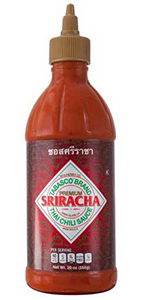A Lot More Than Some Like It Hot
29 April 2015
 Hot sauce is becoming ubiquitous in homes and at foodservice outlets, according to recent NPD Group research. And while the classic Louisiana type still rules, it’s by far not the only hot seller, evidenced by spreading-like-wildfire sales of fruity habanero and chipotle varieties.
Hot sauce is becoming ubiquitous in homes and at foodservice outlets, according to recent NPD Group research. And while the classic Louisiana type still rules, it’s by far not the only hot seller, evidenced by spreading-like-wildfire sales of fruity habanero and chipotle varieties.
Hot sauce, the hotness of which is often ranked by quantity of flames or symbols of hell, is, well, hot right now, says The NPD Group, a leading global information company. Fifty-six percent of households have hot sauce on hand in their kitchens, and Sriracha, a relatively new Asian hot sauce, is already stocked in 9% of total U.S. households and 16% of households headed by someone under age 35, according to NPD’s recently released audit of U.S. kitchens.
The popularity of hot sauce also extends to away-from-home dining experiences. Cases of hot sauce shipped from foodservice distributors to restaurants and other foodservice outlets increased by double digits over the past two years, reports SupplyTrack®, a monthly tracking service that tracks every product shipped from major broadline distributors to their foodservice operators.
Classic Louisiana-style hot sauce is still the leader in terms of case volume shipped from distributors to U.S. foodservice outlets, but shipment growth has tapered off because of the wide variety of hot sauces now available, finds NPD. Case shipments of some habanero hot-sauce flavors, particularly habanero with fruit flavors such as mango, grew triple digits in the year ending December 2014 compared to same period a year ago. There were double the cases shipped of chipotle hot-sauce flavors and Sriracha in 2014 than in the previous year, finds SupplyTrack.
Females, ages 18 to 44 and 55 to 64, and males, ages 18 to 54 and 65 plus, eat more than the average amount of hot sauce over the course of a year, according to NPD’s ongoing food and beverage market research, National Eating Trends®. Females ages 45 to 54 and 65+ eat less than the average amount. Males ages 55 to 64 eat an average amount.
Dual-income, no-kids households, commonly referred to as DINKs, eat more hot sauce than any household lifecycle. Consumers in the South eat more hot sauce than any other region of the country, but those in the central and western United States also eat an above-average amount. Eating less than an average amount of hot sauce are those consumers in the East.
There is a scientific explanation as to why consumers are willing to subject themselves to the burning sensation on their tongues and watery eyes that eating hot sauce often causes. The burning sensation is caused by capsaicin, a natural chemical that sends a burning sensation from the nerve endings in the mouth to the brain. The body defends itself against the pain sensation by secreting endorphins, natural painkillers that cause a physical rush, which is similar to a runner’s high.
“Hot sauce is clearly part of the diet of many U.S. consumers, and it’s a food that crosses gender, age, ethnicity and income,” says Annie Roberts, vice president, SupplyTrack.
